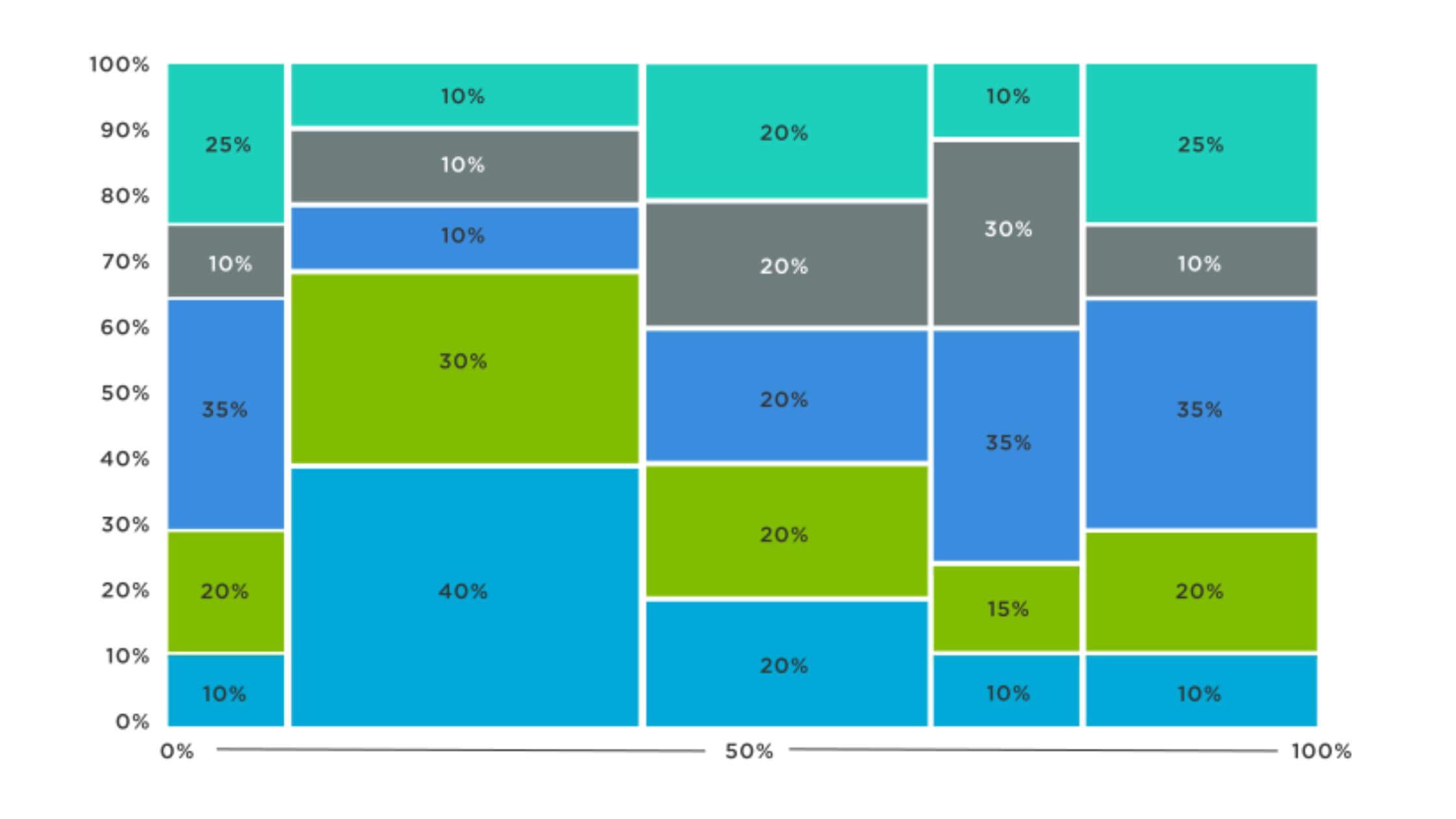Data visualization plays a crucial role in today’s business world, aiding executives to understand complex data quickly. One such tool for data visualization is the Mekko Chart. These charts allow for a more detailed and clearer data representation, making decision-making more efficient and accurate. In this article, we delve into the benefits and applications of Mekko Charts.
Understanding Mekko Charts

Mekko Charts, also known as Marimekko charts, are unique data visualization tools commonly used in business analytics. They are designed to display categorical data over multiple variables, offering a thorough understanding of market dynamics.
The unique structure of a Mekko chart enables the illustration of multiple dimensions of data in a single chart, allowing better data correlation and causality understanding. This results in a life-like representation of market scenarios.
Generally, a Mekko chart consists of 100% stacked bars, with each bar representing a particular group of data. The bars are divided into segments, each representing a sub-category of the group, creating a comprehensive view of data interrelations.
Mekko charts have been widely embraced in strategic planning, market research, and various decision-making processes due to their ability to simplify complex data sets and reveal hidden patterns and trends.
Role of Mekko Charts in Business Decision-Making
Mekko charts serve as an invaluable asset in data-driven decision-making. Their ability to represent a multi-dimensional data set on a two-dimensional canvas makes it easier to understand and analyze complex data patterns.
The flexibility of Mekko charts enables businesses to make accurate forecasts, identify market trends, and observe competitive dynamics, thus propelling informed business decisions.
Further, with Mekko charts, businesses can effectively communicate complex data to stakeholders, facilitating quicker data ingestion and thus fostering timely decision execution.
Given the increasingly dynamic business environment, resources that aid quick decision-making, such as Mekko charts, have become a necessity rather than an option.
Revealing Hidden Insights: The Power of Mekko Charts
Mekko charts possess an unrivaled power to reveal hidden insights in data. They go beyond the capabilities of standard charts by providing a comprehensive view of categorical data spread over multiple variables.
In addition to providing an overview, Mekko charts also allow users to drill down into specific segments of data, offering insights not possible with other types of charts. This feature can uncover previously unseen data correlations, guiding potential strategies.
For instance, in market analysis, a comparison between various product categories and their market shares might reveal unforeseen opportunities or threats, aiding proactive action.
Thus, by revealing hidden insights, Mekko charts enable businesses to think ahead, ensuring sustained competitiveness and growth.
How Mekko Charts Improve Data Visualization
Mekko charts significantly improve data visualization by providing a clear and concise graphical representation of complex data. The ability to illustrate multiple dimensions on a single chart makes it easier to discern and analyze patterns.
Furthermore, Mekko charts can visualize data proportionality, showing the relative significance of various data components. This feature can greatly enhance understanding, particularly when dealing with large data sets. Also, with the color-coding feature, a single glance at the chart allows an immediate understanding of the depicted trends and patterns.
Ultimately, Mekko charts’ improvement of data visualization enables quick data ingestion, facilitating effective and timely decision-making.
In conclusion, Mekko charts represent a significant advancement in data visualization. While there may be a learning curve in their adoption, the potential gains for businesses through enhanced, improved decision-making, revealing hidden insights and strategic business growth make this investment worthwhile. Overall, Mekko Charts are set to play an instrumental role in shaping the future of business decision-making.